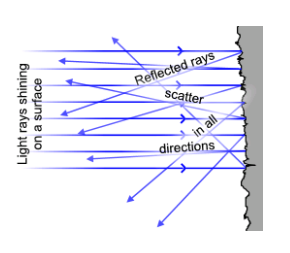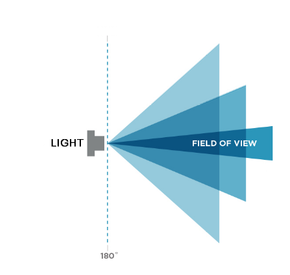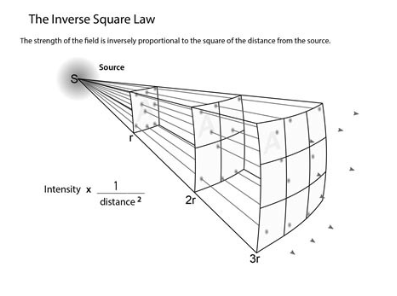UV Difference

UV is Directional
Unlike visible light, UV is more directional. Consider that sunlight diffuses through a reflective process. That is why there is daylight in shaded areas. Natural light is distributed through reflection from surface to surface. The pattern of light distribution depends upon reflective surfaces. As previously mentioned, UV radiation is absorbed by materials. Generally, it does not reflect well. Moreover, when UV bounces off a surface, it can change wavelengths as well as lose energy. This is why reflectors are not effective for most UV applications.

UV Distribution
Artificially generated visible light is usually directional, involving a symmetrical light source and a reflector. Consider a flashlight that sends a beam of light to a target. The reflector geometry directs the light beam. Light fixtures are designed to spread light at a desired intensity within the “field of view.” Sanitizing spaces like rooms or vehicles usually requires a different approach because the objective is to spread radiation in all directions rather than pointed or focused energy. This is because you couldn’t sanitize behind the light source. However, if the objective is to direct energy in a specific direction without other exposures, a focused approach makes sense. Examples include directing UV toward a food preparation table or a conveyer. Distributing UV from a central ceiling location can be effective if the energy distribution pattern is appropriate for the space and the particular surfaces within the space.

Inverse Square Law
All light, including UV, loses intensity with distance. This is in accordance with the “inverse square law.” This is a critical consideration for UV because weaker light requires more exposure time. At some point, the sanitizing process is not feasible. Since each wavelength has a different energy level and propagates differently through air, the UV source must generate the most effective radiation using the least amount of energy and distribute that energy in accordance with the defined application. A stadium poses a different challenge than a hospital room or a vehicle. Spaces with high ceilings like convention centers and exhibition halls are not the same as hotel rooms.
More Information
When scientific studies are aggregated, it appears that each UV wavelength contributes to the overall effectiveness of any sanitizing process. For example, UV-B wavelengths and higher are the only radiation that penetrate the Earth’s atmosphere to reach sea level. Yet, most UV sanitizers have, until recently, concentrated on UV-C at 254nm as the primary wavelength. Right behind this frequency is far UV-C from 207nm to 222nm, which some studies demonstrate better potency against some pathogens. The drawback is that the very nature that allegedly makes far UV-C safe when people are present, i.e. it does not travel as well as UV-B through the atmosphere, renders it ineffective in reaching modest distances from the source. Higher power levels can compensate for this deficiency; however, it is very difficult to produce high-power far UV-C radiation within the narrow bandwidth from 207nm to 222nm. Thus, most lamps claiming to produce this range have other radiation “leakage.” This adds an element of exposure risk. We know this because UV in that range is totally invisible, yet lamps that claim only this range still appear blue to the naked eye.
The two most common UV bulbs are fluorescent tubes and mercury vapor. Due to mercury’s toxic nature and environmental hazard, vapor bulbs were banned in the U.S. in 2008, leaving fluorescent. Although fluorescent and even magnetic induction bulbs contain mercury, levels are significantly lower than with mercury vapor lamps. Sterile-Bright™ bulbs use magnetic induction technology originally invented by Nikola Tesla in 1891.
